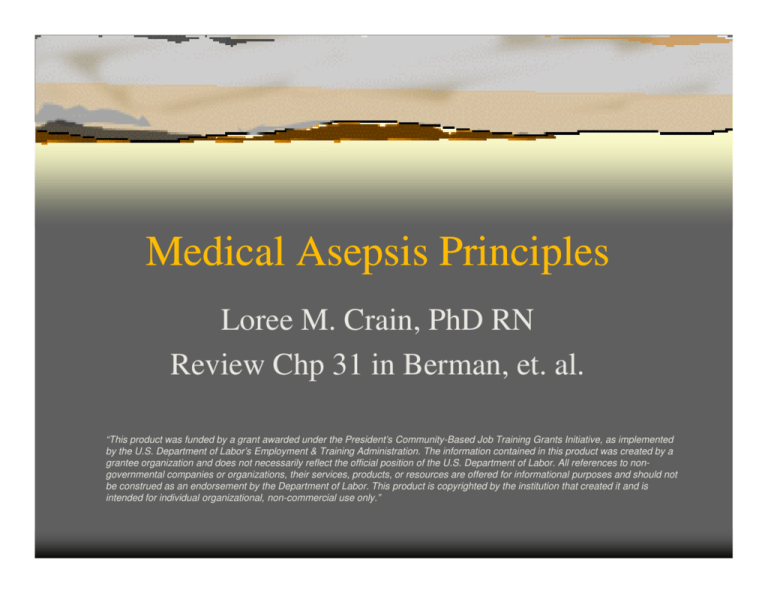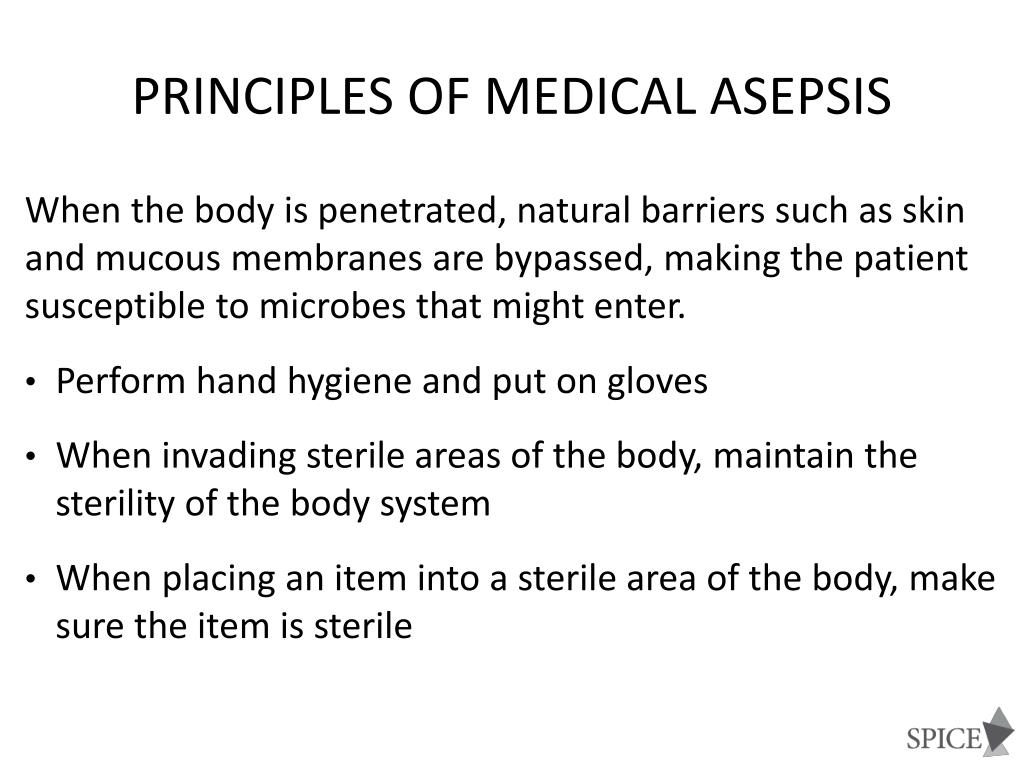
Any partially unwrapped sterile package is considered contaminated

Once a sterile item touches something that is not, it is considered contaminated Personal protective equipments serve as barrier to microbial transmission List 5 examples of medical aseptic practices Antimicrobial agents, Performing hand hygiene, Wearing hospital garments, Confining and containing soiled materials appropriately, Keeping the environment as clean as possible Name at least 3 techniques for sterilizing equipment Physical Sterilization: Radiation, Boiling Water, Free-Flowing Steam, Dry Heat, Steam Under PressureĬhemical Sterilization: Peracetic Acid, Ethylene Oxide Gas Identify at least 3 principles of surgical asepsis - They preserve sterility by touching one sterile item with another that is sterile Blood, body fluids, cells, and tissue are major reservoirs of microorganisms
#Principles of asepsis skin
Frequent handwashing and maintaining intact skin reduces transmission of microorganism A susceptible host Discuss the concept of asepsis Practices that decrease or eliminate infectious agents, their reservoirs, and vehicles for transmission Identify at least 3 principles of medical asepsis - Microorganisms exist everywhere except on sterilized equipment A reservoir for growth and reproductionĦ. Spreading nonsocomial pathogens via unwashed or poorly washed hands Name the 6 examples of biologic defense mechanisms 1. Administering antibiotics to livestock, leaving traces of drug residue that humans consume after their slaughter

Dispersing antibiotic solutions into the environment Prescribing antibiotics for viral infections Taking someone else's prescribed antibiotic without knowing whether it is effective for one's symptoms
#Principles of asepsis full
Failing to take the full course of antibiotic therapy Administering antibiotics prophylactically (for preventing) in the absence of an infection Transient - Pathogens picked up during contamination Differentiate between aerobic and anaerobic microorganisms Aerobic - Requires Oxygen to liveĪnaerobic - Exist without Oxygen Give 2 (of 8) examples of the ways some microorganisms have adapted for their survival - Prescribing antibiotics for minor or self-limited infections Pathogens - Causes Illnesses Differentiate between resident and transient microorganisms Resident - Nonpathogens constantly on skin They are commonly called germs Name 8 specific types of microorganisms Bacteria, Protozoans, Viruses, Mycoplasmas, Fungi, Helminths, Rickettisae, Prions Differentiate between nonpathogens and pathogens Nonpathogens - Harmless and Beneficial

Time Describe microorganisms Living animals or plants visible only with a microscope List safety factors that pertain to the handwashing procedure Protect hands/skin, Dry well to prevent chapping, Wipe up spills, Prevent contact with pathogens, Leave fingernails short, Limit Jewelry, Use lotion to prevent chapping List the four elements necessary in reducing microorganisms when washing hands - Running water


 0 kommentar(er)
0 kommentar(er)
